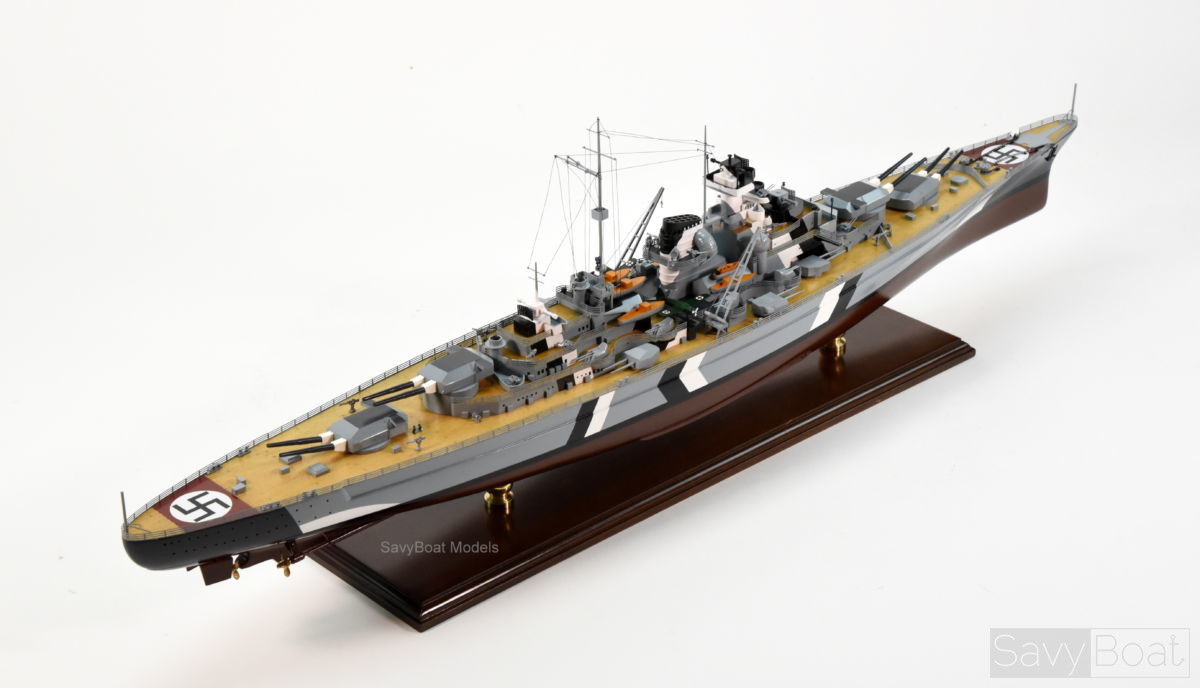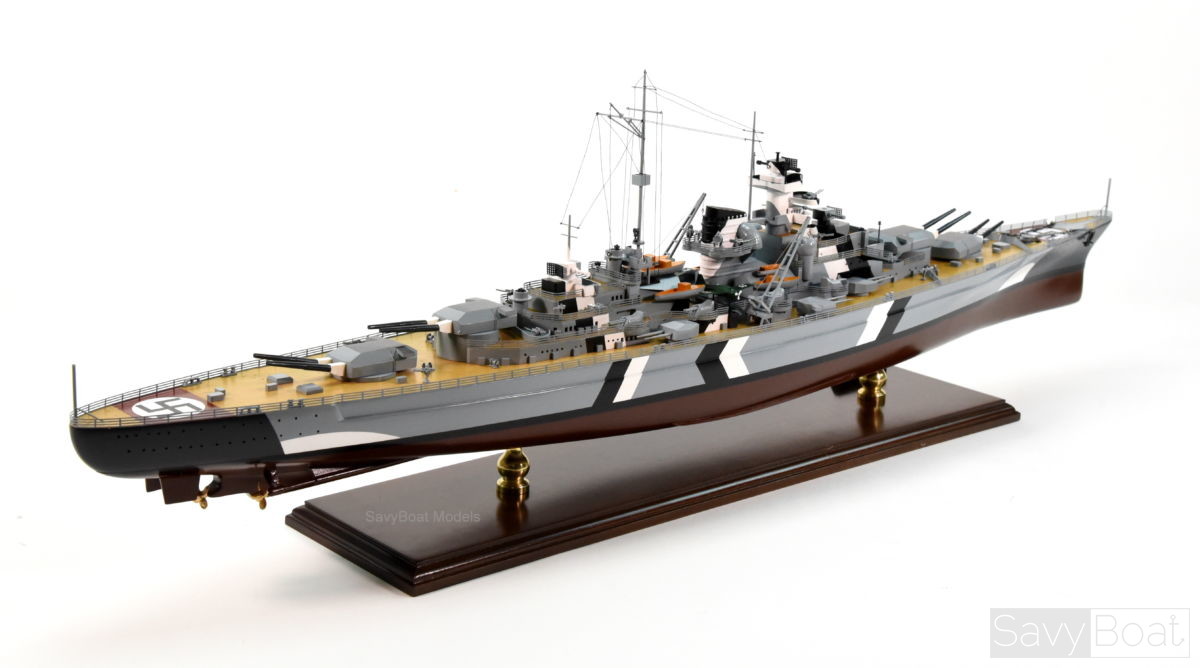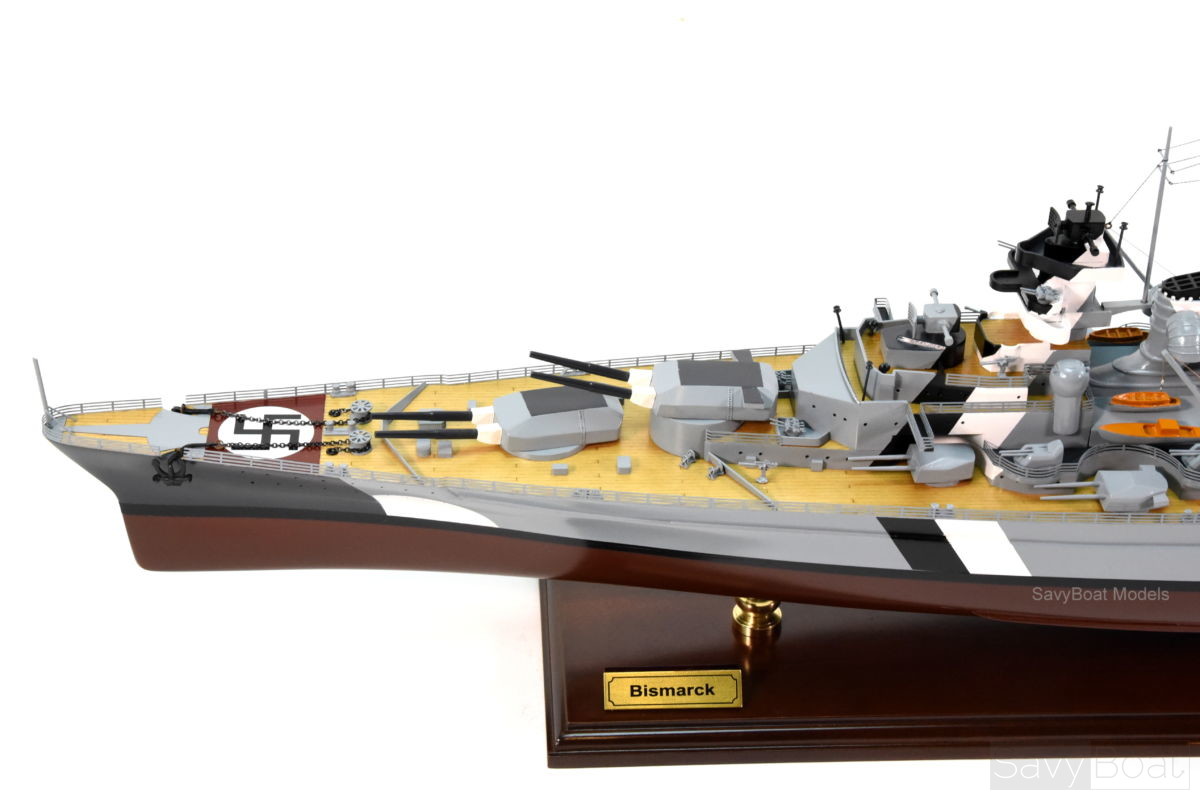Description
- The model is 100% hand built by artisans from scratch using “plank on frame” construction method
- Rosewood, mahogany, teak and other exotic woods are carefully selected to build the model
- Real brass & metal fittings
- Propellers and rudders made from brass
- Hollow hull and hollow superstructure
- Highly-detailed and multi-layered paint to match color of the real ship
Bismarck was the first of two Bismarck-class battleships built for the German Kriegsmarine shortly before World War II. Named after Chancellor Otto von Bismarck, the primary force behind the German unification in 1871, the ship was laid down at the Blohm & Voss shipyard in Hamburg in July 1936 and launched two and a half years later in February 1939. Work was completed in August 1940, when she was commissioned into the German fleet. Along with her sister ship Tirpitz, Bismarck was the largest battleship ever built by Germany, and one of the largest built by any European power.
German battleship Bismarck
In the course of the warship’s short eight month career under its only commanding officer, Capt. Ernst Lindemann, Bismarck conducted only one offensive operation, in May 1941, codenamed Rheinübung. The ship, along with the heavy cruiser Prinz Eugen, was to break into the Atlantic Ocean and raid Allied shipping from North America to Great Britain. The two ships were detected several times off Scandinavia, however, and British naval units were deployed to block their route. At the Battle of Denmark Strait, Bismarck engaged and destroyed the battlecruiser HMS Hood, the pride of the Royal Navy, and forced the battleship HMS Prince of Wales to retreat with heavy damage, although Bismarck herself was hit three times and suffered an oil leak from a ruptured tank.
The destruction of Hood spurred a relentless pursuit by the Royal Navy involving dozens of warships. Two days later, while heading for the relative safety of occupied France, Bismarck was attacked by Fairey Swordfish torpedo bombers from the aircraft carrier HMS Ark Royal; one hit was scored that jammed the battleship’s steering gear, rendering her unsteerable. The following morning, Bismarck was destroyed by a pair of British battleships. The cause of her sinking is disputed: some in the Royal Navy claim that torpedoes fired by the cruiser HMS Dorsetshire administered the fatal blow, while German survivors argue that they scuttled the ship. In June 1989, Robert Ballard discovered the wreck. Several other expeditions surveyed the remains seeking to document the ship’s condition and to determine what sank her.



















Reviews
There are no reviews yet.